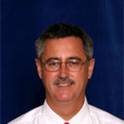Article
ExoDyn: A Cube-Satellite Constellation for the In-Situ Measurement of Upper Atmospheric Composition
American Geophysical Union Fall Meeting
(2016)
Abstract
Based on the recent performance success of the ion/neutral mass spectrometer (INMS) in orbit, onboard the NSF Exocube mission, we present a new mission concept - ExoDyn - to address the long-standing lack of empirical knowledge of neutral dynamics in the topside ionosphere and exosphere. The ExoDyn mission leverages the advance in technical readiness of the INMS sensor with the increasingly cost-efficient potential for small satellite deployment in a constellation formation. Current understanding of the transport of neutrals in the topside ionosphere or exosphere is limited. MSIS modeled neutral exospheric temperatures and densities rely on (among other things) thermospheric (O) thermalization and (O-H) charge exchange continuity assumptions, almost certainly invalid in a collision-less exosphere. We also do not model well the neutral H(z) profiles above the F2 peak, the associated H flux at the exobase, or how these vary with location or geomagnetic storms. The lack of neutral density knowledge at these altitudes conflates peripheral research that relies on (incorrect) model assumptions; e.g., plasmasphere refilling rates are quite sensitive to LEO H and O densities. But observed filling rates do not appear to agree with empirical model predictions. Further, since the neutral hydrogen distribution also controls the loss of H+ and O+, the neutral dynamics also can alter ring current topology, build up and decay rates. While absolute, global, exospheric H density profiles can be obtained by GOES Ly-a absorption profile inversions, the limited temporal coverage gives only approximate bi-annual density profile estimates. Ground-based forward-modelling of Hydrogen fluorescence can give diurnal average H density profiles and exobase flux estimates, but also must be tied to empirical (or model) density measurements to obtain the unique solution (or validate model atmospheric parameters). In-situ measurements of light neutral and ion species densities at LEO, in high resolution, is critically needed to realistically model topside TEC content and neutral transport dynamics, correctly parameterize atmospheric model boundary conditions, constrain observed spectroscopic profile inversions, and further our understanding of thermo/exospheric response to solar variability and secular forcing.
Keywords
- Exocube mission,
- ionosphere,
- exosphere,
- ion/neutral mass spectrometer
Disciplines
Publication Date
December, 2016
Publisher Statement
Abstract #A41H-0156.
Citation Information
Derek Gardner, Susan M. Nossal, Lara Waldrop, Edwin J. Mierkiewicz, et al.. "ExoDyn: A Cube-Satellite Constellation for the In-Situ Measurement of Upper Atmospheric Composition" American Geophysical Union Fall Meeting (2016) Available at: http://works.bepress.com/michael_hickey/55/
